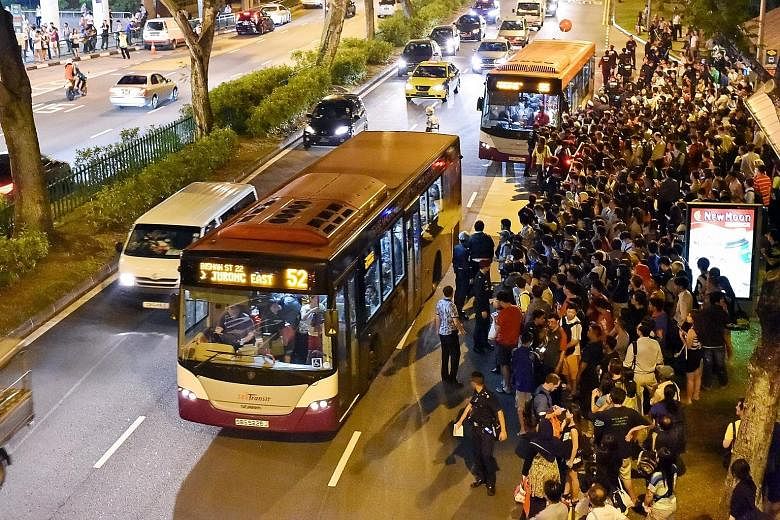Last week's massive MRT breakdown was likely caused by a problem with the insulation of the third rail, which supplies power to trains.
This was revealed by operator SMRT yesterday, nine days after the North-South and East-West Lines were shut down for more than two hours during evening rush hour on July 7 - affecting more than 250,000 commuters.
According to its statement yesterday, SMRT said "round-the-clock" investigations have narrowed down the likely cause to the insulation, which is part of the trackside infrastructure that protects the power cables supplying the third rail.
This insulation could have affected the supply of traction power, said SMRT. This might in turn have led to the tripping of the Touch Voltage Protection Relay along multiple stretches of the lines. The relays are a safety measure, meant to protect commuters from the danger of an electric shock.
National University of Singapore Associate Professor Lee Der Horng said he was not surprised by the finding. The third rail is insulated by ceramic material; this might have cracked and thus caused the insulation to be lost, he said.
"I think ageing (of the material) is an issue," he added. Given how some rail systems overseas replace the insulation periodically, he suggested that SMRT do the same.
The operator's investigations into the incident included looking at 200km of train tracks, all 67 power substations supporting the North- South and East-West networks, all 115 trains used on July 7, and another 26 trains at depots.
Re-enactments conducted last weekend ruled out two earlier suspected causes: two track voltage balancing cables and a relay in a power substation.
SMRT, which agreed last Friday to the appointment of an independent consultant to look into the incident, has also approached international rail operators such as London Underground for their views on its preliminary assessment.
And it has engaged retired staff to help with investigation and rectification. This includes two Mass Rapid Transit Corporation staff involved in developing the power network in the early years.
Work to make the power network more robust has also been fast- tracked following the incident.
Trackside components are being renewed and SMRT will work with the Land Transport Authority to segment, where possible, the network of cables that supply power to the two lines.
This will make the rail network more resilient, as a power fault on one part of the line will then be unlikely to disrupt travel on other parts or the other line.


